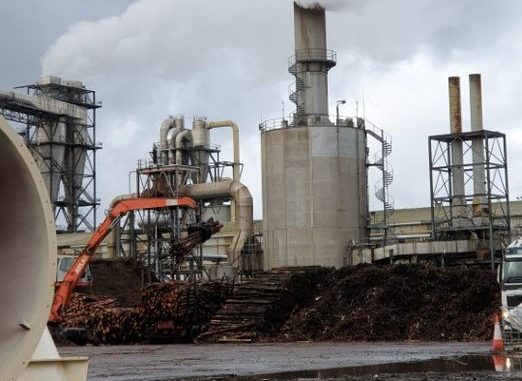
For the InFutUReWood project, Dan Ridley-Ellis and I visited a number of companies in Scotland and North England. We were interested in demolition and wood recycling practices that are currently used in the UK. The following companies contributed to our research by giving us interviews and showing us their facilities:
Chamic is a demolition company that is specialised in asbestos removal. They demolish and refurbish buildings of all sorts in Scotland and northern England. Michael Hunter, the Demolition Manager, is leading the operations in the fourth generation.
Hamilton Waste and Recycling receives waste from construction and demolition sites and commercial and industrial waste. All material is sorted and the vast majority of it is recycled. Everything from mattresses, over plasterboards to wood waste is prepared for a second life using unique approaches for each material stream. Wood waste is chipped and the higher grades sold to particleboard manufacturers while the lower grades terminate their life in energy recovery plants. The company is engaged in product development from recovered materials to enhance the recycling possibilities further.
ENVA is the UK market leading company for recycling solutions for all kinds of materials. Recovered wood is processed into animal bedding and chips for biomass and chipboard production on seven sites across the UK. Only the highest quality material can be used for animal bedding, so careful sorting of the input material is crucial. ENVA provides trainings for waste wood collectors and demolition companies to ensure they sort recovered timber accordingly.
Timberpak is the recycling division of EGGER, one of the largest chipboard manufacturers in Europe. Since EGGER uses a lot of recovered wood in their products, Timberpak is an important supplier of wood chips for the company. Four production sites in the UK are constantly collecting, sorting and chipping waste wood. All material that cannot be used in particleboards, mostly MDF, is used for energy recovery.
EGGER, as mentioned above, manufactures chipboard and fibreboard on a large scale in two locations in the UK and several more across Europe. We visited the production plant in Hexham, England. The EGGER group combines all activities around wood-based products: From forestry over saw-milling to board production and recycling.
Norbord is a chipboard, OSB and MDF manufacturer based in the UK and Belgium. With three production sites in the UK, the company is one of the biggest local producers of particleboards and was the first one to produce MDF locally. We visited the production plant in Cowie, where around half of the production comprises of particleboard and the other half of MDF.
Glasgow Wood Recycling is a community wood recycling company. They collect and receive material from construction and demolition sites, private households and commercial waste. Volunteers sort the wood to either resell it or produce unique furniture and decorative items. Many scaffold boards and whisky barrels are transformed into tables, benches, plant pots, candleholders, or whatever comes to the mind of the creative volunteers. The company also offers trainings and workshops to help people with employability and tackle social isolation.
Move On Wood Recycling follows the same approach as Glasgow Wood recycling. The company in Edinburgh has a workshop to reprocess recovered timber that is somewhat smaller than the one in Glasgow, but not less interesting. Move On offers a collection service and sells used wood for your DIY project, whisky barrels, furniture and decoration. Ecological and social aspects are equally important company values that are highly appreciated by their customers.
Visiting these companies, we found out which kinds of houses are being demolished and what happens to the timber that is recovered from these buildings. We gathered information on the volumes of timber that go into recycling plants in Scotland and which processes are used in the production of new products. We saw how small-scale community approaches make a high-value reuse of old timber possible. In addition we learned about the challenges the different industries are facing and the gaps in the timber reuse and recycling system, that our own project might be able to fill. We will publish the findings here and on the InFutUReWood website soon.
Our huge thanks goes to all the companies who cooperated with us to give us insight on their work with recovered timber!

Leave a Reply
You must be logged in to post a comment.